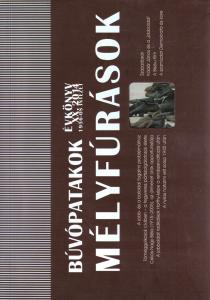
Underground Streams, Drilling Deep
Underground Streams, Drilling Deep.
The Hungarian Right Wing – after 1945. Yearbook XX. 2014.
Edited by János Rainer M.
NSZL–1956 Institute Foundation, Budapest, 2014., 294 pages
ISSN 1216-7851
The 1956 Institute that works within the organizational framework of National Széchényi Library has assigned four main research areas for itself in 2011. Apart from the thorough study of these a general overview was also needed, so this volume presents the material of the conference held in December 2013 to introduce the entire research program, following the original schedule of the event.
Here is a summary of editor János Rainer M.:
“The topic was too complicated and the researchers’ interests too diverse and specialized for us to build up a unified and individual story of it. Instead we pursued goals and used methods that, as well as perhaps the results, are clearly reflected by the title Drilling Deep. The structure of both the conference and the present work is designed accordingly. We start with conceptual problems, an interesting multidimensional attempt of the political science at interpreting right wing (András Schweitzer). Then we present two far-lying examples of applying the concept at opposed parts of the political spectrum in the Kádár-era, one at the top of the power structure and the other opposed to it: Gábor Tabajdi searches for the definition of right wing on János Kádár’s political mental map, while János Molnár looks for it in the text and behavior corpus of a characteristic group of the Hungarian samizdat. At the end of the volume we find two studies that relate to the series of works in the previous Yearbook: authors Dávid Turbucz and Réka Sárközy analyze the notions and constructions of Hungarian national-conservatives regarding Miklós Horthy and his era on one hand, and the time and representatives of the Soviet-type regime (or Communism as they called it) on the other. In the middle section of the book there are mainly case studies of history of politics and society, stories of typical representatives of the national-conservative thought: groups and individuals of the elite and the middle class. Extremists appear in two texts (by András Lénárt and Krisztián Ungváry), or to put it more precisely, we can learn about their disappearing, hiding and possible reappearing. The studies of János Rainer M. and Iván Miklós Szegő depict the transformation and survival of thoughts and ideas as underground streams through the thought and career story of a micro-group and a single person supposed to be national-conservative.”
Shopping
Our publications are available in our bookshop, or can be ordered from the Publications Department of the NSZL using the contact details below: Főigazgatói Kabinet kiadványtára, Országos Széchényi Könyvtár, 1276 Budapest P.O. box 1205., phone: 06 1 232-3556, e-mail: kiadvanytar@oszk.hu.




